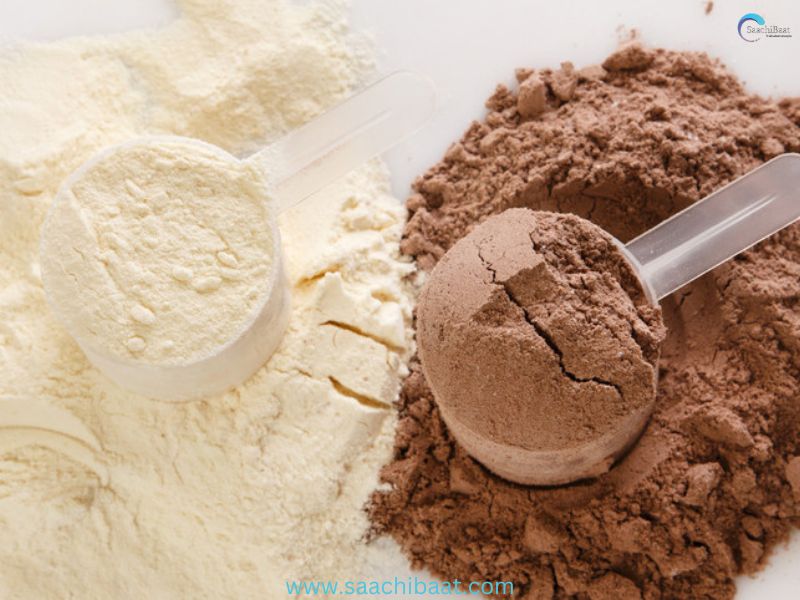Protein and its dietary supplements have rarely been out of the news, but in the last week, they’ve made quite a few headlines.
The ICMR-National Institute of Nutrition (NIN) has released dietary guidelines for 2024, recommending that people avoid the use of protein supplements. The guidelines state, “Consuming high levels of protein, especially in the form of protein supplement powders, is not advisable.” This advice is based on concerns about potential health risks such as kidney damage and bone mineral loss associated with prolonged high intake of protein supplements.
At the same time, the Food Safety and Standards Authority of India (FSSAI) is intensifying regulations on protein supplements after a study revealed widespread false and misleading claims. Nearly 70% of popular protein powders in India were found to provide incorrect information about their protein content, with some offering only half of what they claimed. Additionally, 14% contained harmful fungal aflatoxins, and 8% had pesticide residues. The study highlighted the need for stringent scrutiny and safety regulations for the protein supplement industry to ensure consumer safety.
This is indeed very timely as the markets and online platforms are flooded with protein powders of all varieties, adding to the chaos. A recent paper highlighted the poor quality, safety, and purity of many available products. Not only did they fail to meet what was stated on the labels, but there were also contaminants and adulterants, including heavy metals.
Before anything, let’s take a quick look at the popular varieties of protein supplements on the market:
Whey protein concentrate; whey protein isolate; milk protein isolate
Egg white protein
Bone broth protein
Collagen
Meat-based powders
Plant-based protein supplements:
Soy
Pea
Rice
Hemp Blends & Combos: Pea and rice are currently popular in various ratios. For instance, a 70:30 ratio resembles whey, but all kinds of ratios are available, which can influence the quality of the protein.
Coming back to the NIN guideline, which may seem like a novel recommendation, but it happens to be one of the very basic principles of good nutrition practiced for eons.
Upon assessments, if there is a gap between the requirement and actual consumption of proteins, the first line of action is always to augment the diet through protein-rich foods. It is quite common to find that a large segment of the population does not meet the daily requirement of proteins, which is 0.8 g per kg body weight. In fact, many seemingly healthy people, when assessed for actual protein intake, do not meet the mark. This is easily explained as we are a carb-loving people. A large portion of our diet consists of carb-rich foods such as poha, suji upma, pulao, wheat rotis, and parathas. Protein-rich foods take a backseat in our diet.
Because of these reasons, there is a role for supplements of protein that can be added to beverages, flour, and other routinely consumed foods without much disruption, until and unless you are convinced to change and adopt new eating practices. This is why it is often practical to add a scoop or two of protein powder to fulfil protein requirements.
Besides the general population, India has a huge population of diabetics and pre-diabetics, those with fatty liver disease (now referred to as MASLD), and sarcopenia, for whom meeting protein requirements is higher and remains critical for regaining health parameters. Other than the well-established roles that protein plays in our well-being, the newer roles in influencing body weight, lean mass, and glycemic parameters have also been established. Moreover, the digestion and absorption of proteins are affected in many disease conditions, hence the need for supplementation.
However, protein powders and supplements come with their own set of problems. A rather damaging report recently brought to light the fact that 28 of the 34 brands of protein powders evaluated failed to pass the safety test. The report highlights the poor regulatory framework prevalent, making it difficult to trust supplement labels. It was noted that many of the protein supplement brands tested were not providing even the amount of protein that was listed on the label. The protein content was way below the levels quoted across many brands. Contamination and adulteration were other common issues seen in these supplements.
When choosing a protein supplement, the following are some things to look out for.
The certifications on the label: The more third-party certifications or clearances present, such as Glyphosate Residue Free Certification and Clean Label Project Certification, the greater the safety and standards likely maintained in the product.
Keep abreast of the latest and unbiased evidence regarding the use of supplements by checking reliable sites such as www.examine.com.
Avoid brands with added sugar, sweeteners, and artificial flavourings.
Get your trusted HCP or family physician to recommend a brand suited to your needs.
Vilifying protein supplements hardly serves any purpose. Despite being a devout practitioner of the Fixing Food First approach, I believe that there are situations when a supplementary form of protein is needed.
Eating behaviour in humans is particularly difficult to change. For instance, will it be easy for you to substitute wheat roti with besan, soy flour, or quinoa flour rotis? Busy lifestyles add to the difficulty in adopting and sustaining dietary changes, especially if new foods and cumbersome steps are involved.
Hence, additions or slight modifications, such as adding protein powders, may be helpful to get started while the process of changing eating behaviour takes time.
As the last word, I will say that the indiscriminate use of protein supplements is a no-no. Prescription of protein supplements should be made after assessments and based on actual requirements.
 |
Ms. Neelanjana Singh, Nutrition Consultant & Author |


